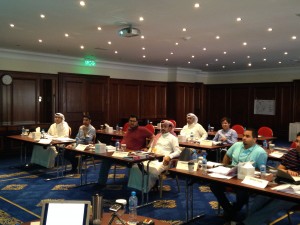According to a recent Stratus Advisers report, FCC unit capacity will increase by an average annual growth rate of 0.3% between now and 2035. However, even with relatively static growth in FCC capacity, we could see significant operational and maintenance related investments to this conversion unit.
Regardless of capacity, the FCC unit continues evolving to deal with market driven product changes. These product changes, ranging from higher olefins production to bunker fuels are also influencing the types of feedstocks pushed through the cat cracker.
According to a BASF presentation at the recent AFPM Cat Cracking conference (A. Shackelford, “FCC Benchmarking,” CAT-16-13) it was noted that between now and 2035, about 50% of cat cracker feed processed globally is resid based compared to 40% in the early 2000s. In this context, resid is defined as 3000 ppm (Ni + V) with gas oil feed being less than 3000 ppm (Ni + V).
The way that resid is upgraded varies among regions. This is because, according to the Shackelford presentation, the Asian market generally targets higher propylene production while the North American market targets higher gasoline production. Up until about 2011, North American FCCs used relatively high amounts of rare earth oxide (REO) based catalysts until REO based equilibrium catalysts (E-cat) began spiking upwards. In fact, REO based catalyst usage bottomed out around 2012.
The BASF presentation noted that Asian cat crackers used relatively small amounts of REO based E-cat, as they continue to target propylene over gasoline. To compensate for reduced REO, FCC E-cat with higher total surface area (TSA) has been introduced in higher volumes to maintain the level of activity previously provided by REO catalyst. In addition, Asian refiners also needed to add higher activity catalysts as they continue to process resid with high metal content.
Shackelford noted that FCC feed pretreating will help increase FCC catalyst activity as refiners again begin introducing higher volumes of REO based E-cat plus TSA based E-cat, in combination with resid focused process technology. In any event, higher volumes of lighter feedstocks are readily available for refiners, such as in North America, but these “easier-to-process” lighter feeds, such as shale based LTOs, don’t come without their own caveats. These lighter feeds constrain the unit’s wet gas compressor while also affecting the unit’s heat and pressure balance.
In spite of a relatively static refined product market, U.S. refining capacity nonetheless increased by 1.7 million bpd between 2006 and 2016. What’s more important to consider as the outlet that is readily available for this increased production primarily by way of exports to Latin America, especially since the recent major expansion of the Panama Canal has opened up the west coast of Latin America to exports from PADD III refiners.
In fact, the U.S. Energy Information Administration (EIA) noted that U.S. refined product exports have more than doubled over the past six years. So it stands to reason that much of the limited refining capital will be purposed for meeting the most important FCC optimization objectives in order to maintain or increase gasoline production for the export market, including higher production of LPG based olefins and lower dry gas production.








Leave a Reply
You must be logged in to post a comment.